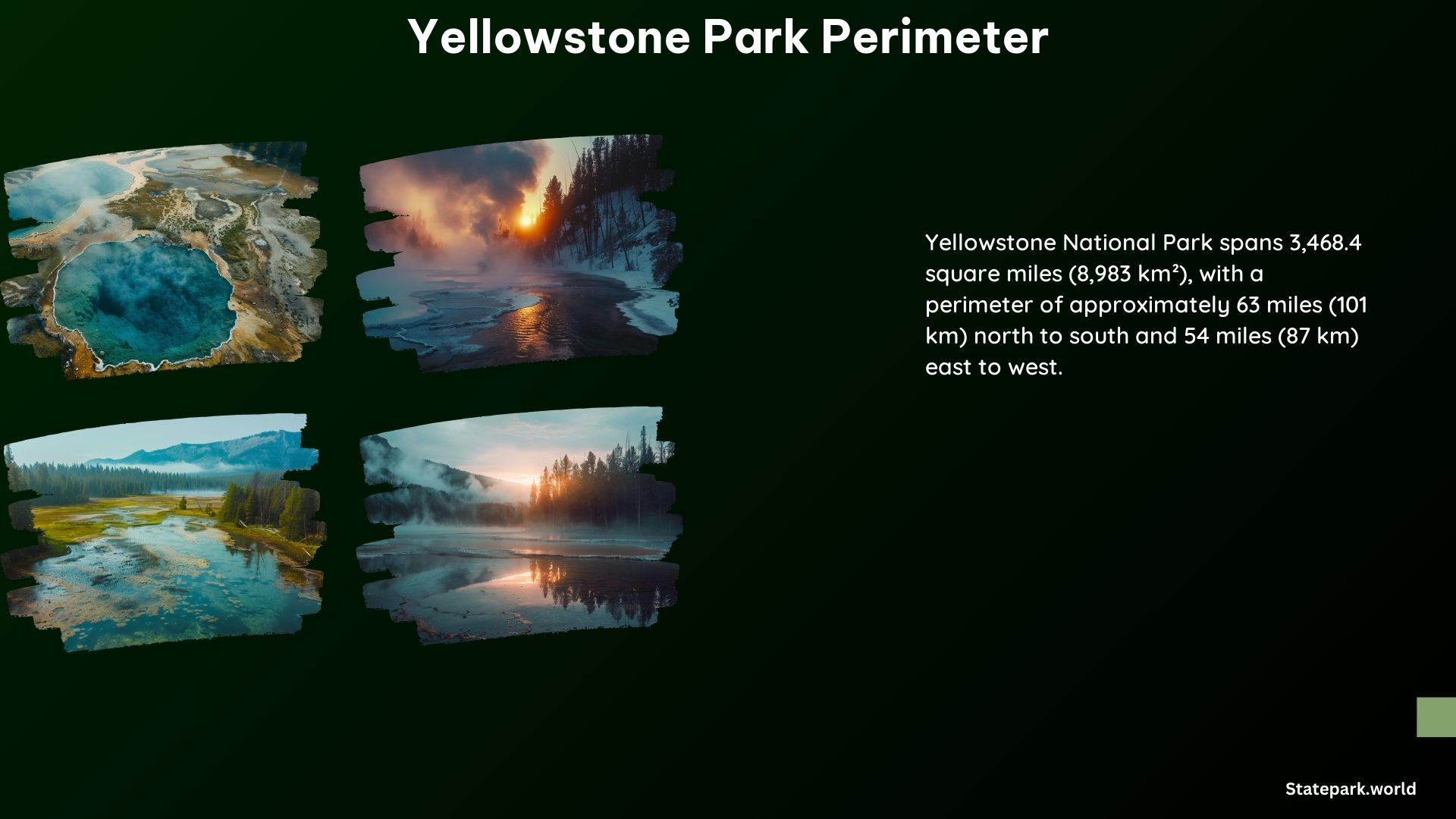Yellowstone National Park is a vast and awe-inspiring natural wonder, spanning across three states and boasting a perimeter that stretches for an impressive 1,000 miles (1,609 km). As a National Park touring enthusiast, exploring the diverse landscapes and hidden gems that make up this park’s perimeter is a truly remarkable experience.
The Total Length of the Yellowstone National Park Perimeter
The Yellowstone National Park perimeter covers a significant area, encompassing parts of Wyoming, Montana, and Idaho. The total length of the park boundary that makes up this perimeter is approximately 1,000 miles (1,609 km).
Effective Ways to Explore the Yellowstone National Park Perimeter

Visitors to Yellowstone National Park have several options to effectively explore the park’s expansive perimeter:
Road Trips
One of the most convenient ways to explore the Yellowstone National Park perimeter is by taking a road trip. The park has five main entrances, and visitors can drive along the 466 miles (750 km) of roads, including 310 miles (499 km) of paved roads, to experience the diverse landscapes and attractions that line the park’s boundaries.
Hiking Trails
For those seeking a more immersive experience, Yellowstone National Park offers over 1,000 miles (1,609 km) of backcountry hiking trails, with 92 trailheads strategically located throughout the park. These trails provide ample opportunities for visitors to venture off the beaten path and explore the park’s perimeter on foot.
Maps and Guides
To help visitors navigate the Yellowstone National Park perimeter, the National Park Service offers a variety of resources, including official maps and guides. These include a printable full map (848 KB PDF) and an interactive park map through the NPS app, which can be invaluable tools for planning and executing a comprehensive tour of the park’s boundaries.
Visitor Centers
Scattered throughout Yellowstone National Park are eleven visitor centers, museums, and contact stations, which serve as valuable resources for visitors exploring the park’s perimeter. These facilities provide information, guidance, and insights that can enhance the overall experience of exploring the park’s vast and diverse boundaries.
Additional Facts about Yellowstone National Park
Geography
Yellowstone National Park occupies an area of 3,472 square miles (8,991 km2), with 96% of the park located in Wyoming, 3% in Montana, and 1% in Idaho.
Highest and Lowest Points
The highest point in the park is Eagle Peak at 11,358 feet (3,462 m), while the lowest point is along Reese Creek at 5,282 feet (1,610 m).
Conclusion
Exploring the vast perimeter of Yellowstone National Park is a truly remarkable experience for National Park touring enthusiasts. With its diverse landscapes, abundant wildlife, and rich history, the park offers a wealth of opportunities for visitors to immerse themselves in the natural wonders that make up its expansive boundaries. Whether you choose to embark on a road trip, hike the backcountry trails, or utilize the park’s visitor centers and resources, the Yellowstone National Park perimeter is a must-visit destination for any outdoor enthusiast.
References
- https://www.nps.gov/yell/planyourvisit/maps.htm
- https://www.nps.gov/yell/planyourvisit/parkfacts.htm
- https://www.yellowstonepark.com/park/national-park-maps/overview-map-yellowstone/
- https://en.wikipedia.org/wiki/Yellowstone_National_Park
- https://www.yellowstone.org/experience/visitor-information/yellowstone-national-park-facts/
